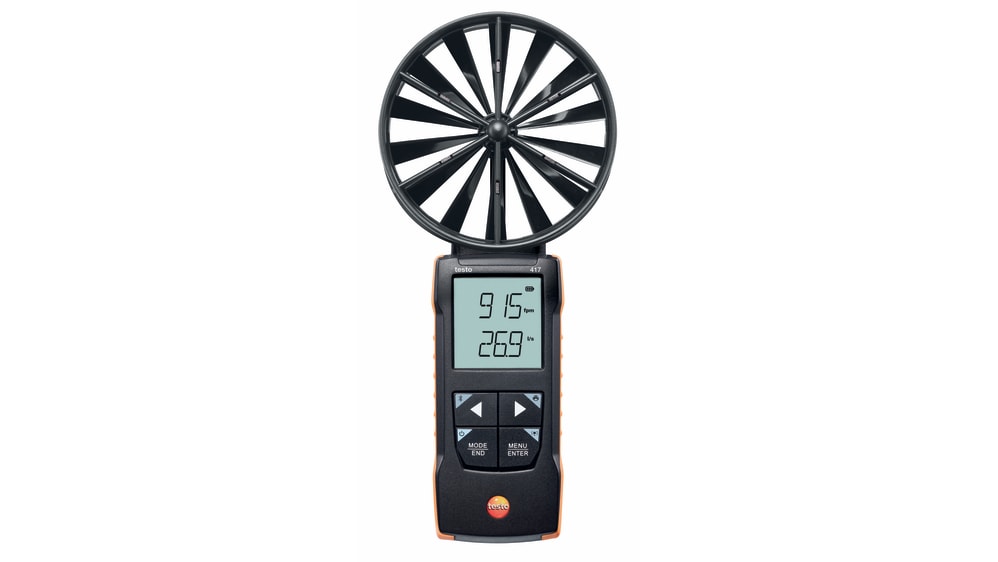Understanding Different Types of Anemometers for Various Applications
Understanding Different Types of Anemometers for Various Applications
Blog Article
Anemometers Introduced: Comprehending Their Value in Ecological Surveillance and Precaution
The duty of anemometers in ecological monitoring and safety and security steps is often taken too lightly, yet their importance is obvious. From meteorology to aeronautics security, anemometers play a crucial function in providing precise information that notifies decision-making procedures and enhances general safety.
History of Anemometers
The development of anemometers can be traced back to the old human beings where simple wind gauging devices were first used. One of the earliest recognized anemometers was the hemispherical mug anemometer invented by Leon Battista Alberti in the 15th century.
Over the years, innovations in modern technology led to the growth of more modern anemometers, including ultrasonic anemometers and laser Doppler anemometers, offering raised accuracy and effectiveness in measuring wind rate and instructions. The background of anemometers showcases an exceptional journey of innovation and progress in the area of meteorology.
Sorts Of Anemometers
Throughout the field of weather forecasting, various types of anemometers have actually been developed to precisely gauge wind speed and instructions. Sonic anemometers make use of ultrasonic signals to measure wind speed and direction properly. Hot-wire anemometers run based on the principle that the cooling impact of wind on a warmed wire is proportional to the wind rate.
Applications in Meteorology
Having actually reviewed the numerous kinds of anemometers utilized in meteorology for measuring wind rate and instructions, it is important to explore their practical applications in the field. Anemometers play a vital duty in weather forecasting by offering real-time and precise data on wind conditions (anemometer). Meteorologists utilize anemometers to keep track of wind speed and direction to forecast weather patterns, issue warnings for extreme climate occasions like cyclones, storms, and twisters, and evaluate weather for aeronautics safety and security
In weather forecasting, anemometers assist in understanding local and local wind patterns, which are vital for forecasting climate modifications and figuring out climatic trends. These tools are likewise used in study to research microclimates, metropolitan warmth islands, and air contamination dispersion. Furthermore, anemometers are employed in farming to enhance crop monitoring methods, such as irrigation and chemical application, based on wind conditions.
Relevance in Aeronautics Security
An essential facet of making certain aeronautics safety and security lies in the thorough tracking of wind problems using anemometers. Anemometers play a crucial function in aviation by supplying real-time data on wind rate and instructions, aiding pilots in making educated decisions during liftoff, flight, and landing. Unforeseeable and solid winds can substantially influence aircraft operations, making it essential for air travel authorities to depend on accurate wind measurements to ensure the safety and security of passengers and team.

In the dynamic setting of aviation, where also small adjustments in wind rate and direction can have profound results, anemometers stand as essential devices for advertising safe and safe flight.
Role in Environmental Research Study
Anemometers play an essential function in environmental research study by offering vital information on wind rate and instructions. By precisely determining wind attributes, anemometers assist scientists examine the motion of contaminants in the air, evaluate the influence of commercial exhausts, and anticipate the spread of pollutants in the atmosphere.


Verdict
To conclude, anemometers have actually played a vital role in environmental surveillance and precaution. With a rich history and various types readily available, these tools have actually been commonly made use of in weather forecasting, aeronautics security, More Bonuses and environmental research. Recognizing the significance of anemometers is vital for accurately measuring wind rate and instructions, which is important for predicting weather patterns, guaranteeing safe aeronautics operations, and conducting ecological research studies - anemometer. Their contributions to these fields can not be taken too lightly.
One of the earliest well-known anemometers was the hemispherical cup anemometer designed by Leon Battista Alberti in the 15th century. Over the years, innovations in innovation led to the growth of more contemporary anemometers, including ultrasonic anemometers and laser Doppler anemometers, providing enhanced accuracy and efficiency in determining read the article wind rate and direction. Hot-wire anemometers operate based on the concept that the cooling impact of wind on a warmed cord is symmetrical to the wind rate. Meteorologists utilize anemometers to check wind rate and direction to anticipate climate patterns, issue cautions for extreme weather occasions like storms, cyclones, and tornadoes, and evaluate atmospheric problems for aviation security.
Recognizing the relevance of anemometers is crucial for precisely gauging wind rate and instructions, which is essential for predicting weather patterns, making certain safe aviation operations, and conducting environmental studies. (anemometer)
Report this page